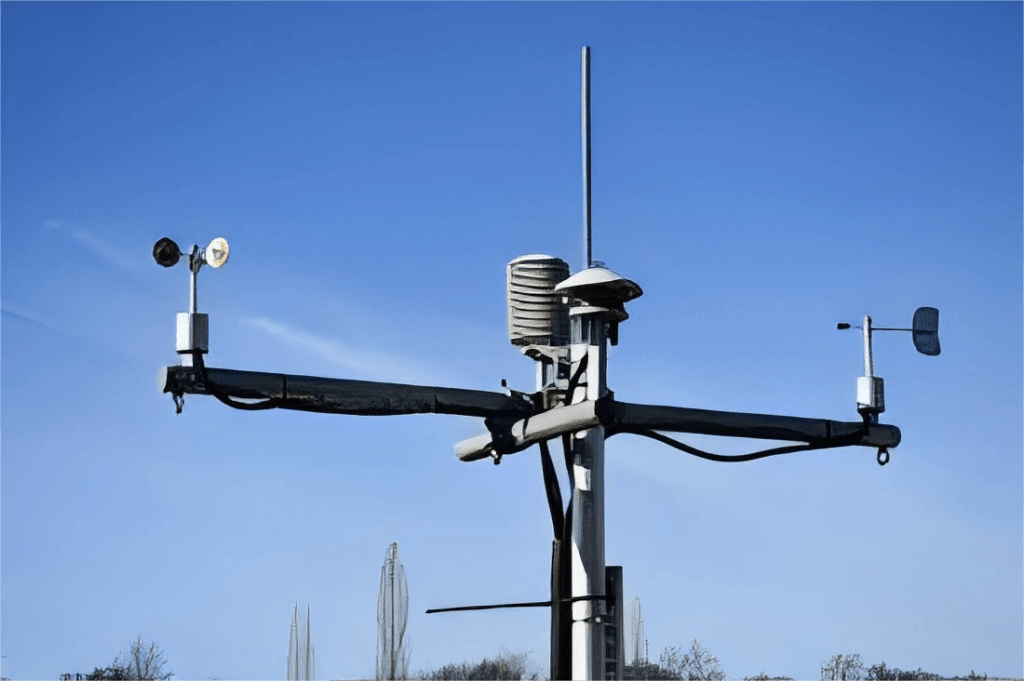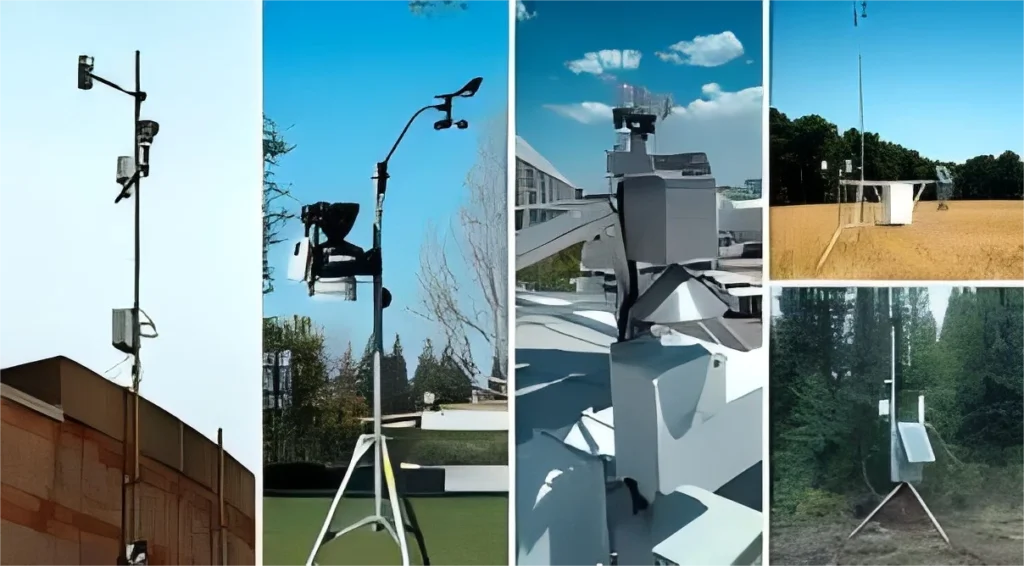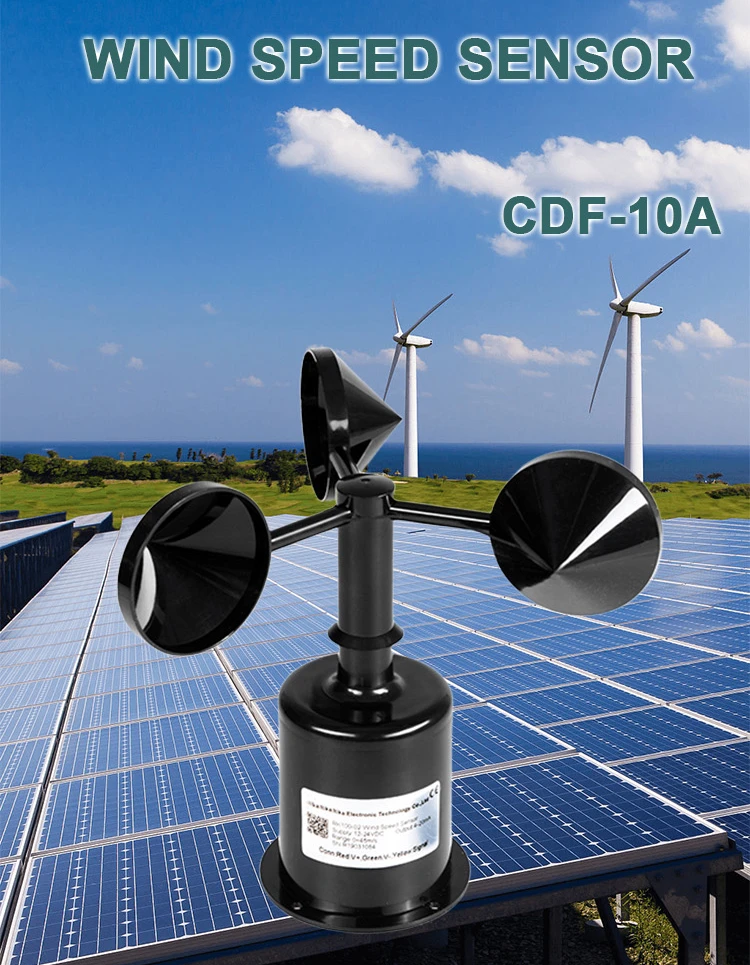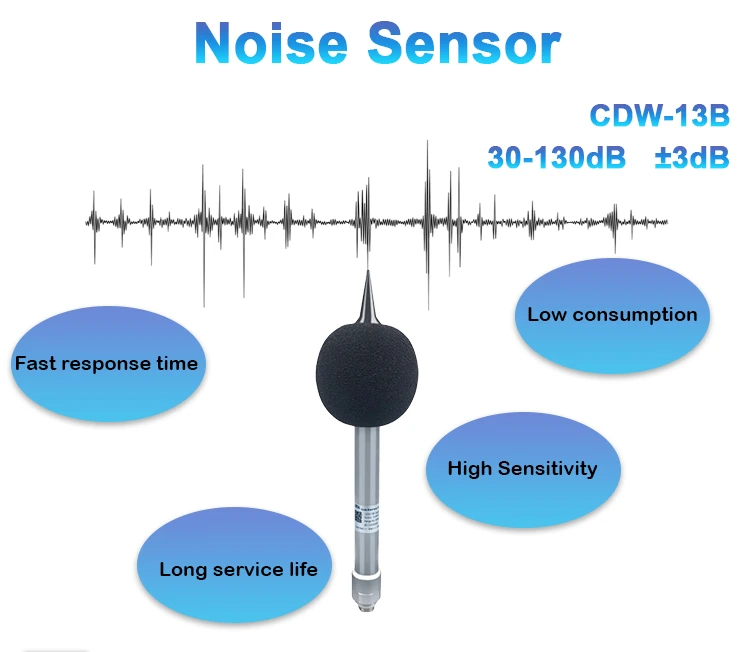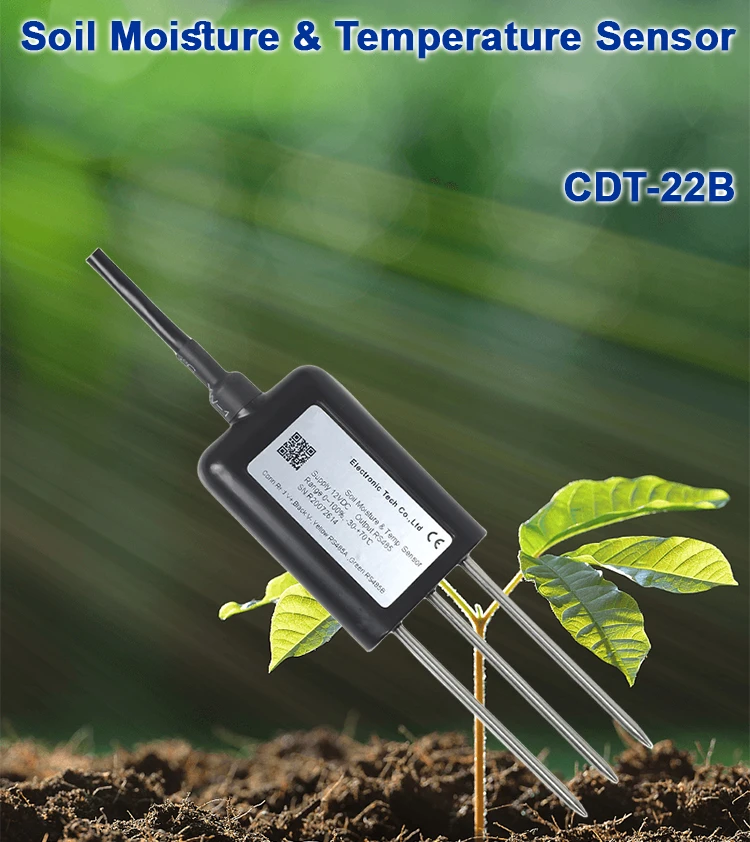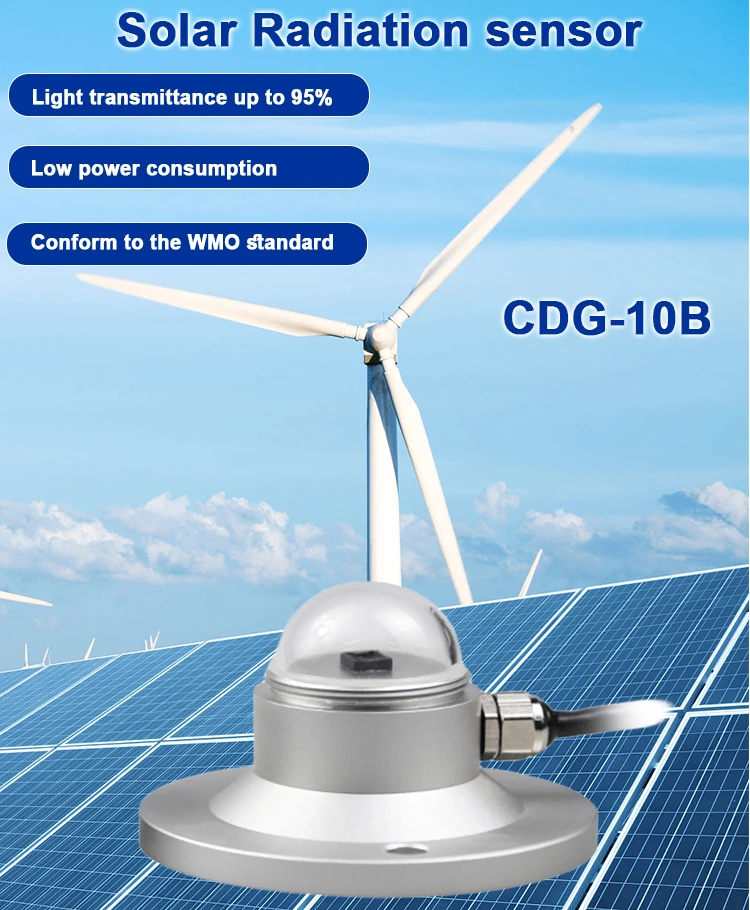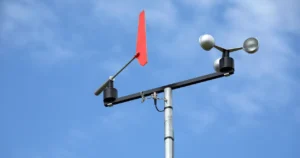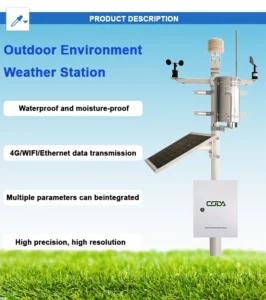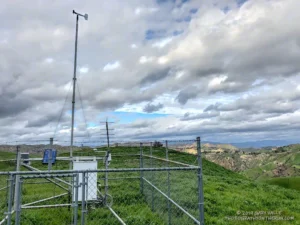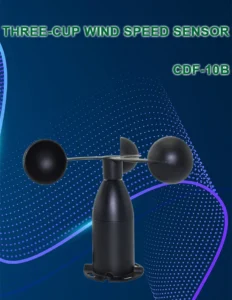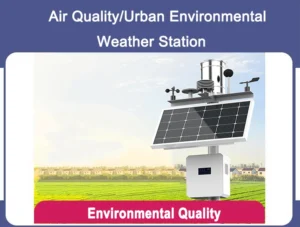Top 9 Weather Sensors for a Meteorological Station
A weather sensor is a tool that measures and tracks weather factors. These factors include temperature, humidity, air pressure, wind speed, and wind direction. People usually install these sensors on meteorological station, satellites, planes, ships, and other platforms for weather observation.
The main goal of weather sensors is to collect and record data on atmospheric conditions. This helps us understand and predict weather changes better. Here are some reasons why weather sensors are important:
1.Weather forecasting:
Meteorological sensors give real-time data that helps create accurate weather forecasts. By gathering information about the atmosphere, meteorologists can study weather patterns and predict the weather better.
2. Disaster surveillance and early alerts:
Meteorological sensors track severe weather such as storms, tornadoes, floods, and snowstorms. Quick access to this information allows for early warnings. This helps people take safety measures.
3. Agriculture and rural progress:
Meteorological sensors give important data on soil moisture, rainfall, and temperature. Farmers use this data to plan planting, manage water, and protect their crops. This helps improve farming and rural development.
4. Aviation and maritime security:
Outdoor weather sensors are vital for aviation and maritime industries. They provide data on wind, pressure, and visibility to keep pilots and crews safe and help plan flights and routes.
5. Climate research:
Data from weather sensors is important for studying climate change. By tracking different parts of the atmosphere, scientists can understand the climate better. This helps them predict future changes.
In short, manufacturers make weather sensors to collect and track weather data. This helps give accurate forecasts, warn about disasters, support farming, keep aviation and shipping safe, and aid climate research.
Top 10 Weather Sensors for a Weather Station:
1.Sensors for Atmospheric Temperature, Humidity, and Pressure
1.1 Temperature Sensors:
These devices measure air temperature with tools like thermocouples and thermistors. These monitoring devices change temperature changes into electrical signals. They are often used in weather stations, satellites, and other weather tools.
1.2 Humidity Sensors:
These sensors measure temperature humidity in the air. They use materials like hygroscopic substances, capacitors, resistors, or piezoelectric parts. Humidity sensors help predict rain, study clouds, and manage farm irrigation.
1.3 Atmospheric Pressure Sensors:
Designers make sensors to measure air pressure in the environment. They often use piezoresistive or piezoelectric technology to detect changes in air pressure. Atmospheric pressure sensors are important for weather enthusiasts, climate studies, and aviation.
The sensors can send data in two ways. They can send it wirelessly or through cables.
This data goes to weather stations, data loggers, or other systems. This data is used for analysis and forecasting. Together, they give accurate weather information needed for forecasting, climate research, and more.
2. Wind Speed Sensors
Wind speed sensors measure how fast the wind blows. They are an important part of weather systems. Here’s a quick overview of them:
The main job of wind speed sensors is to measure how fast the wind is blowing. They change this information into an electrical signal. We can use different methods for this, like rotating, ultrasonic, and hot-wire sensors, among others.
2.1. Rotating wind speed sensors:
These sensors usually have a rotating rod or vane that spins with the wind. By measuring how fast or how far it turns, we can find the wind speed. Rotating wind sensors are often used in weather stations and wind farms.
2.2. Ultrasonic wind speed sensors:
These sensors use ultrasonic technology to measure wind speed. They send out ultrasonic waves and check how long the signals take to travel. They also measure the direction of the waves. Ultrasonic wind sensors are known for their accuracy and quick response. They are widely used in aviation, weather, and marine fields.
2.3. Hot wire wind speed sensors:
These sensors use heated wires to measure wind speed. They work by checking how much the wires cool down when the wind blows. Hot-wire wind sensors are often used in weather stations and HVAC systems.
Combining wind speed data with temperature, humidity, and pressure readings gives a fuller picture of the weather. This helps with weather forecasts, climate research, air travel, and wind energy use.
3. Wind direction sensors
Wind direction sensors measure which way the wind is blowing and are an important part of weather monitoring network. Here’s a brief overview of them:
The main job of wind direction sensors is to measure the wind’s direction in the air. They then convert this information into an electrical signal. These sensors use different technologies and designs to do this.
3.1. Directional wind direction sensors:
These sensors have a rotating part, like a wind vane or arrow, that moves with the wind. They measure the position to show the wind’s direction. You can find them in weather stations and aviation.
3.2. Magnetic Wind Direction Sensors:
These devices use a magnetic part to measure the wind’s direction. They usually have one or more magnetic sensors. These sensors react to a magnetic field and change when the wind blows. By looking at the changes in these sensors, we can find out the wind’s direction.
3.3. Photoelectric Wind Direction Sensors:
These sensors use light to measure wind direction. They have a light source and a light-sensitive part. When the wind moves, it changes the angle of the light, which changes the sensor’s signal. By reading this change, the sensor finds the wind direction. These are often used in weather stations and aviation.
Mixing wind direction data with wind speed, temperature, and humidity gives a better view of the weather. This helps with weather forecasts, climate studies, aviation, and using wind energy more effectively.
4. PM2.5 Sensor
A PM2.5 sensor measures the amount of tiny particles in the air that are 2.5 micrometers or smaller. These small particles are harmful because they can enter deep into the lungs and affect health.
PM2.5 sensors detect particles using light scattering, laser scattering, or CCD technology. When particles pass through, the sensor counts them. It then turns this count into an electrical signal to show the concentration.
PM2.5 sensors are often used to check air quality indoors and outdoors. They also help track personal health.
These sensors help people and organizations understand pollution levels. This information allows them to take steps to improve air quality and protect health. In some places, governments use these sensors to track pollution and make environmental policies.
It’s important to choose PM2.5 sensors that are accurate and reliable. Follow the right standards and rules to ensure good air quality monitoring.
5. Noise Sensors
Noise sensors check how loud the environment is. They are often found in city streets, factories, offices, and homes to track noise pollution.
Noise sensors work by measuring sound levels (in decibels) and analyzing sound frequencies. They capture sounds from the environment and turn them into electrical signals for analysis.
Real-time noise data from these sensors helps us understand noise levels around us. This information is important for city planning, environmental protection, traffic control, workplace safety, and more.
Noise sensors are widely used in various fields: urban noise monitoring, traffic management, industrial settings, medical devices, and audio equipment. Their data helps governments and organizations:
Develop noise control policies
Improve people’s quality of life
Ensure workplace safety
Support environmental protection and urban planning
When choosing noise sensors, accuracy, sensitivity, and reliability matter a lot. Follow the right standards. Placing the sensor in the right spot is also important for getting good data. Choose the locati0n carefully based on your needs.
6.CO2 Sensor
Carbon dioxide (CO2) sensors find and measure CO2 levels in a space. They are often used to check indoor air quality in places like offices, schools, factories, and other buildings.
These sensors often use infrared light or chemical methods. Infrared sensors measure CO2 by checking how it absorbs infrared light.
Chemical sensors find changes in CO2 levels through reactions. They give real-time CO2 data to monitor indoor air quality. This helps take quick actions to keep the environment healthy.
The possible uses for CO₂ sensors include, but are not limited to, these areas:
1. Indoor air quality monitoring:
CO2 sensors are important for keeping indoor spaces healthy. They are used in offices, schools, hospitals, and more. These sensors track CO2 levels to check air quality. They also help with good ventilation control.
2. Greenhouse gas monitoring:
CO2 sensors are important in greenhouses and growing sheds. They track CO2 levels to help create the best conditions for plant growth.
3. Industrial process control:
In industrial production, CO2 sensors monitor emissions. They help protect the environment and improve process control.
When using CO₂ sensors, you should think about their accuracy, response time, stability, and fit for the environment. Placing them correctly ensures accurate readings. Regular maintenance and calibration help keep the data reliable.
7. Illuminance Sensors
Illuminance sensors measure how bright the light is in a space. They are often used for lighting control, farming, building design, energy-saving systems, and environmental monitoring.
Illuminance sensors work using photosensitive elements like photoresistors, photodiodes, or photosensitive capacitors. These parts respond quickly to changes in light. When light levels change, their resistance, current, or capacitance also changes. By detecting these shifts, the sensor provides accurate data about light levels.
Key uses of illuminance sensors include:
1. Indoor lighting control:
These sensors change indoor lighting based on the light outside. This helps save energy and makes you more comfortable.
2. Agricultural light management:
In greenhouses and plant growth areas, light sensors help control brightness. This supports healthy plant growth based on their needs.
3. Building design and energy efficiency:
Illuminance sensors track light levels inside and outside. They provide helpful data for building design and lighting plans. This can save energy and improve efficiency.
4. Environmental monitoring:
These sensors check light levels in public areas and streets. They give important information for city planning and safety.
When choosing light sensors, consider accuracy, response time, range, and sensitivity to light. The sensor should be placed in a good spot to detect light levels. Regular calibration and maintenance are needed to keep the data accurate and reliable.
8.Soil Temperature and Moisture Sensors
Soil temperature and moisture sensors check how warm and wet the soil is. They are used in farming, gardening, and environmental monitoring. These sensors help manage watering and support healthy plant growth.
Soil temperature and moisture sensors work in different ways. Two common types are resistive sensors and capacitive sensors.
8.1 Resistive Sensors: These sensors measure soil moisture by detecting changes in electrical resistance. When soil moisture rises, the soil conducts electricity better, so the sensor’s resistance reading goes down.
8.2 Capacitive Sensors: These sensors measure soil moisture by detecting changes in the soil’s dielectric constant. When moisture increases, the dielectric constant goes up, causing the sensor’s capacitance reading to rise.
The main uses of soil temperature and moisture sensors are:
1. Agricultural irrigation:
These sensors help farmers track soil moisture, so they know the best time and amount of water to use for irrigation. This saves water and improves efficiency.
2. Plant growth management:
By giving key data on soil temperature and moisture, these sensors help improve conditions for plant roots and guide better fertilization plans.
3. Soil quality monitoring:
These sensors monitor soil moisture and temperature. They help check soil quality and find problems like waterlogging or drought.
When picking soil temperature and moisture sensors, think about accuracy, response time, range, and durability. Also, consider how easy they are to install and maintain. Different plants and soil types need different sensor features and installation depths, so choose wisely.
9. Solar Radiation Sensors
Solar radiation sensors measure how strong sunlight is. People use them in fields like weather, environmental monitoring, and renewable energy.
These sensors often use parts that react to light, like silicon photocells or thermocouples. They respond to sunlight by creating electric current or changing temperature. This helps the sensors measure solar radiation levels accurately.
The applications of solar radiation sensors encompass a wide range of uses, including the following:
1. Meteorological monitoring:
Solar radiation sensors measure the strength of both solar and ultraviolet radiation. This data helps meteorologists predict weather and study climate trends.
2. Renewable energy:
Solar radiation sensors measure how much sunlight reaches the Earth. They give important data to help solar panels and water heaters work better. This helps us use solar energy more effectively.
3. Environmental monitoring:
These sensors can measure solar radiation in different places. They help with urban planning and safety monitoring. For example, they can track heat island effects in various areas of a city.
4. Building design:
Architects use solar radiation sensors to choose the direction of buildings and where to place windows. This helps them get more natural light and heat.
When choosing and using solar radiation sensors, it’s important to consider accuracy, response time, measurement range, and sensitivity to different light conditions. Picking the right installation spot is also key to get accurate readings. Regular calibration and maintenance help keep the data reliable and precise.
